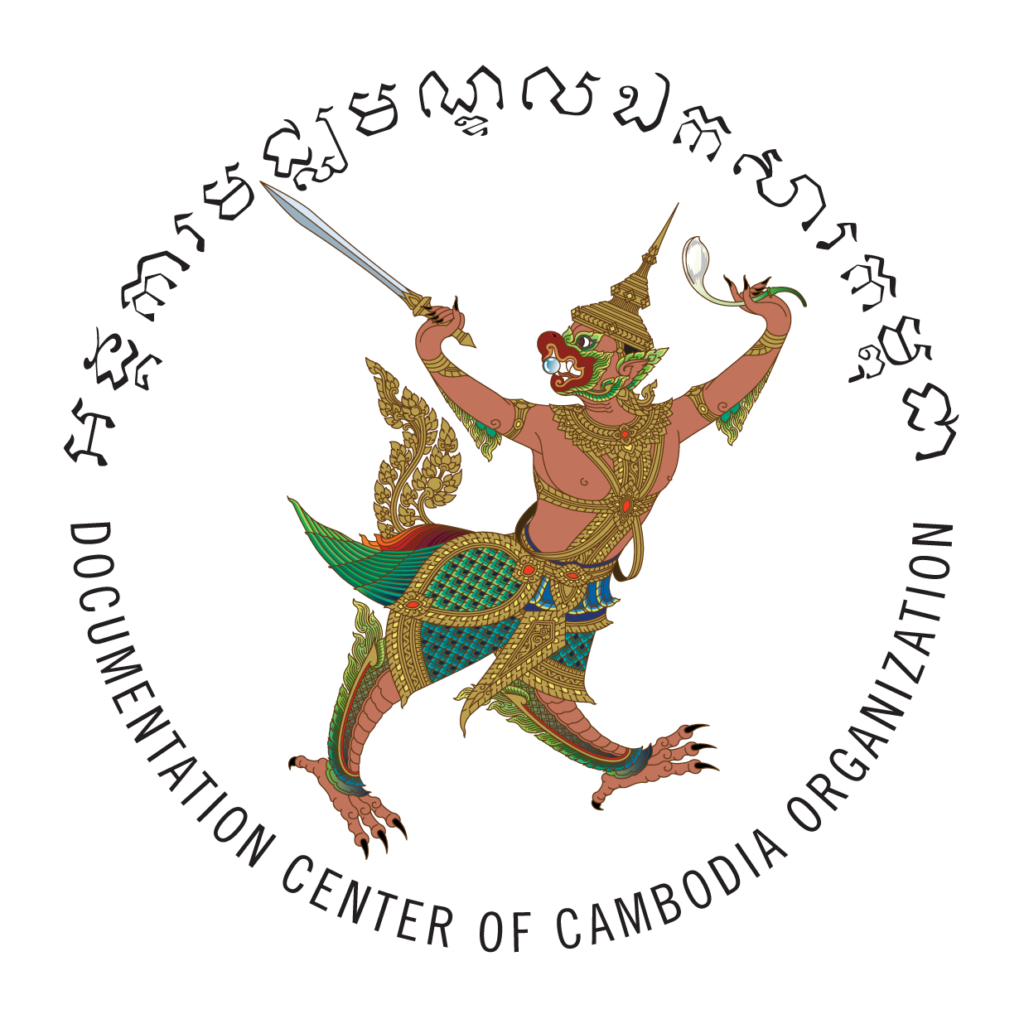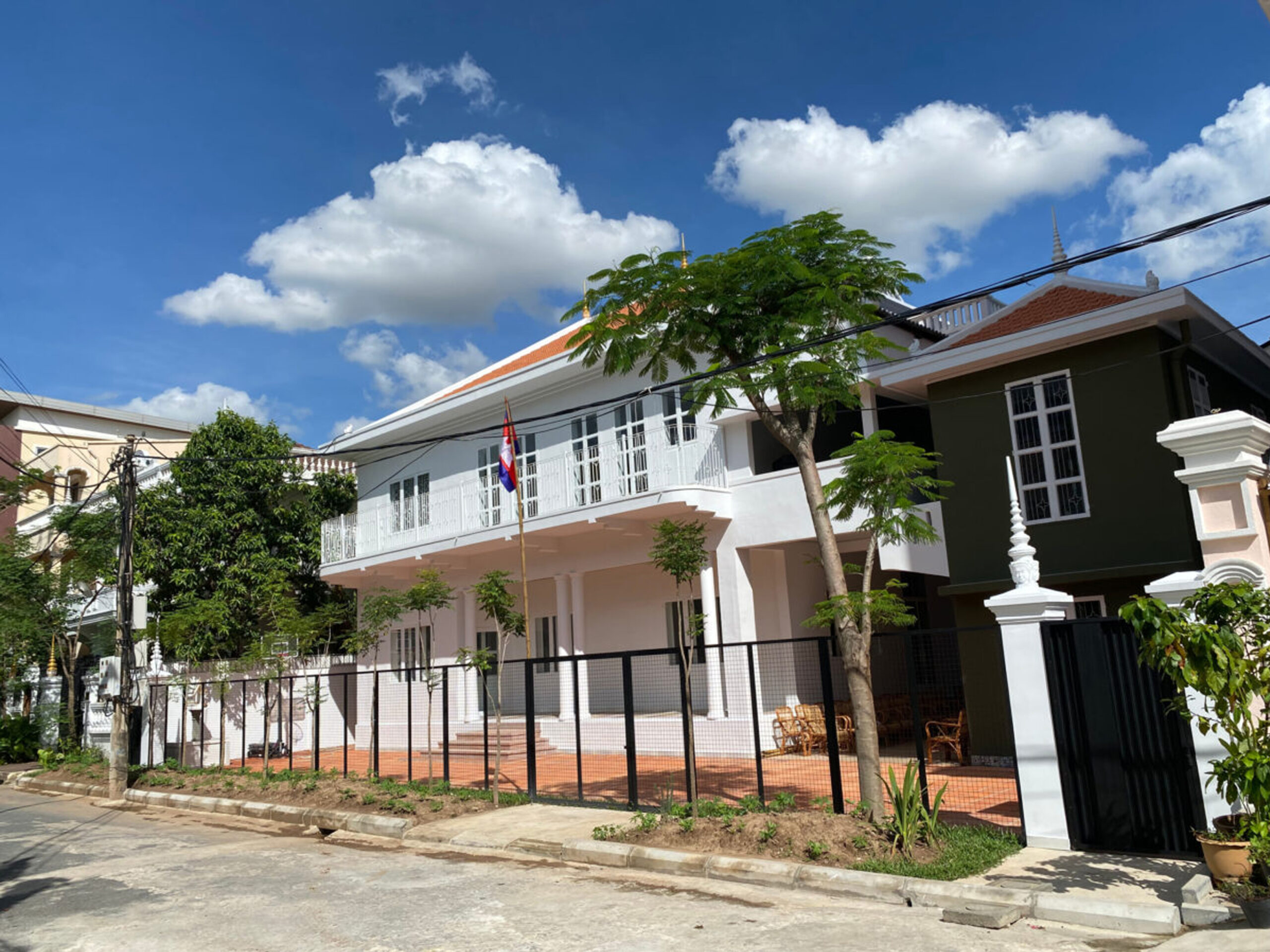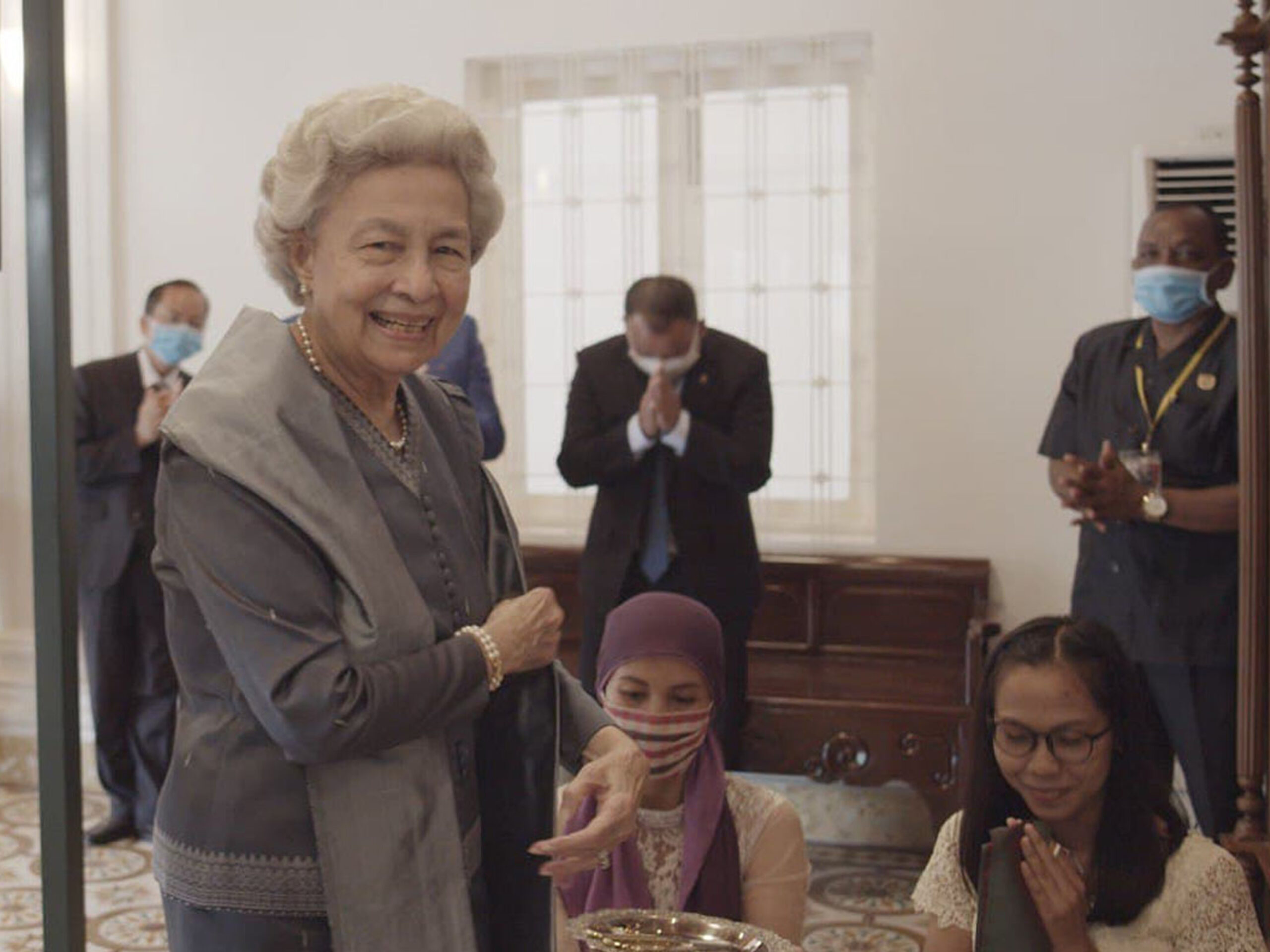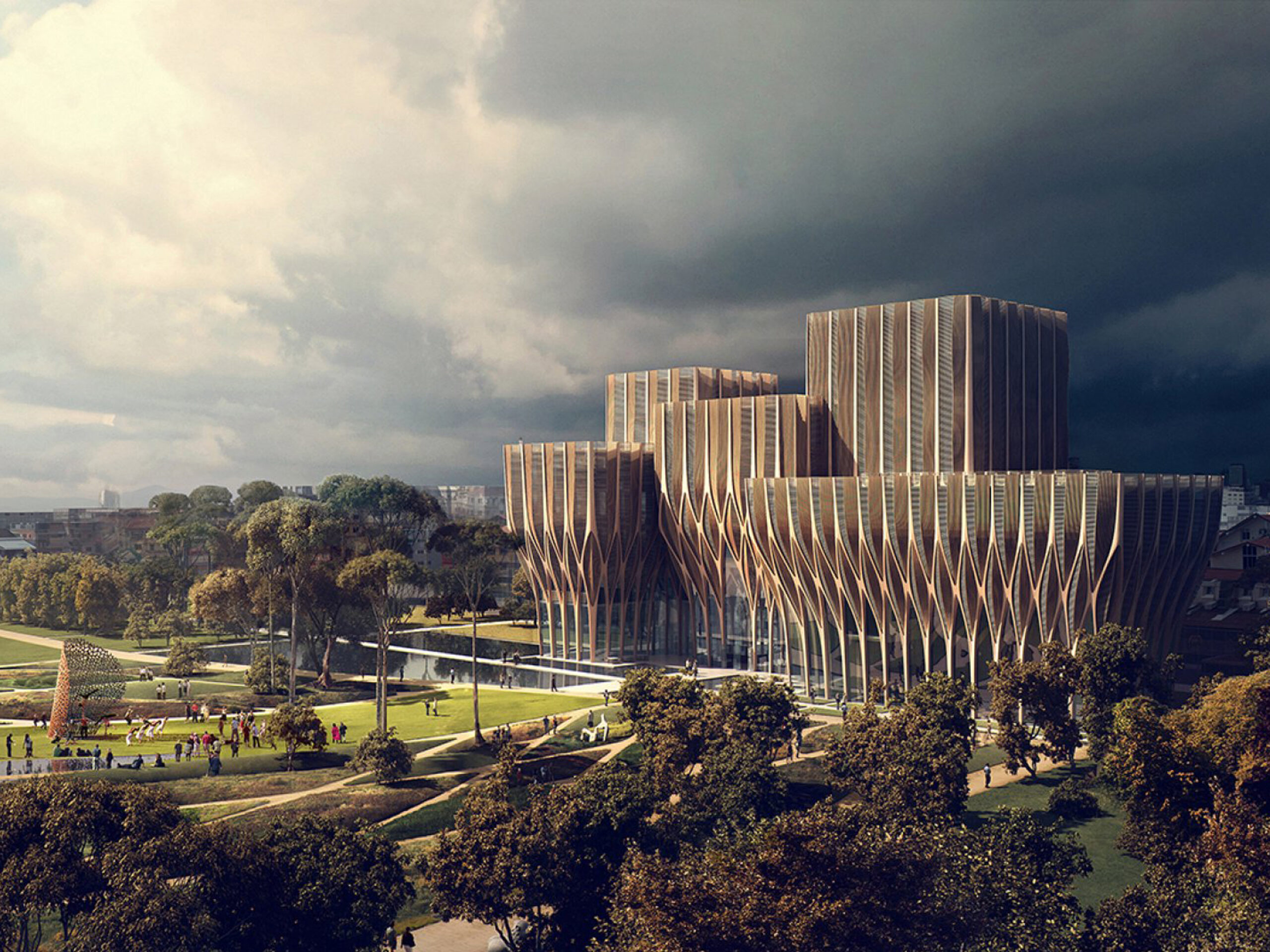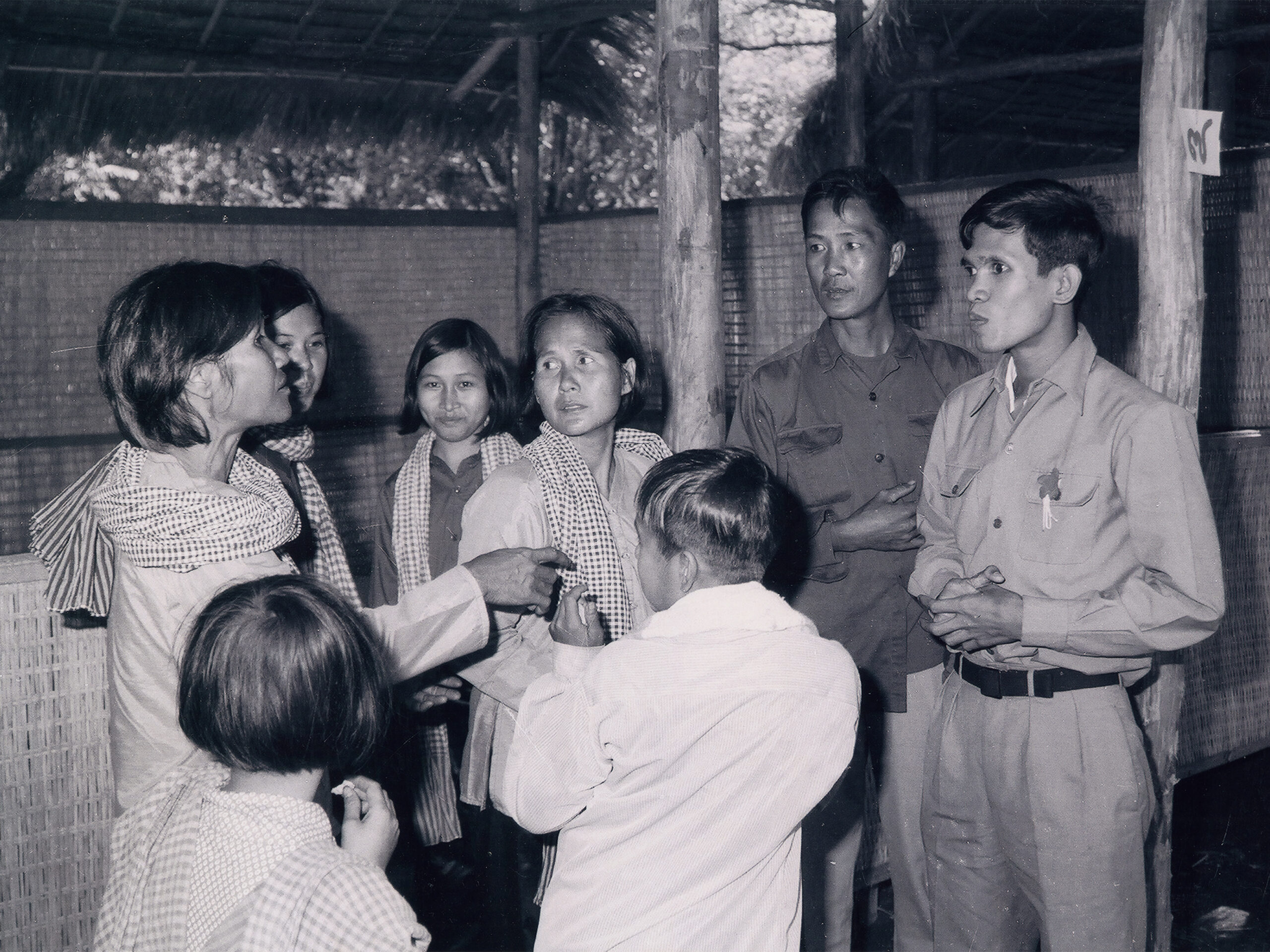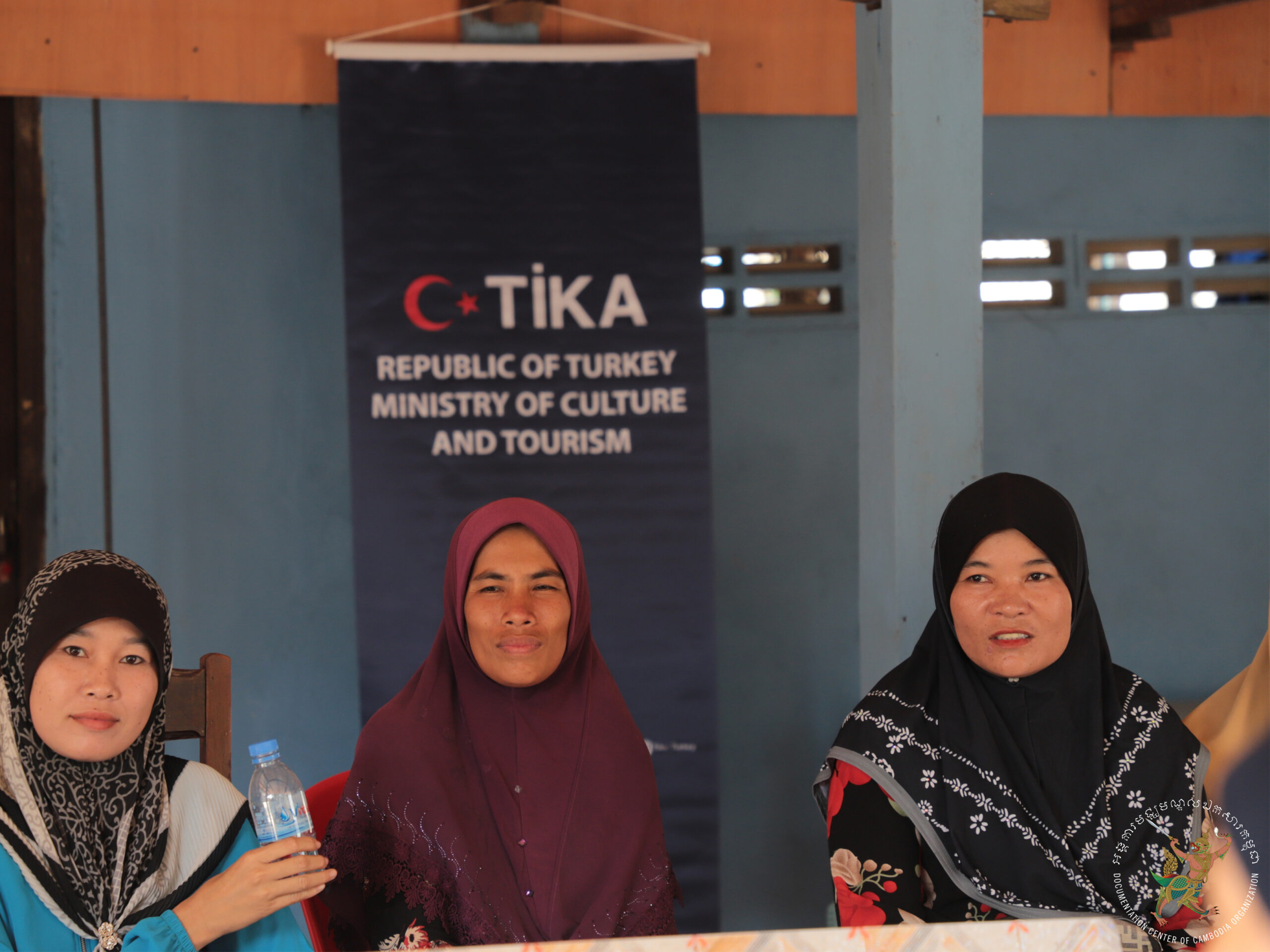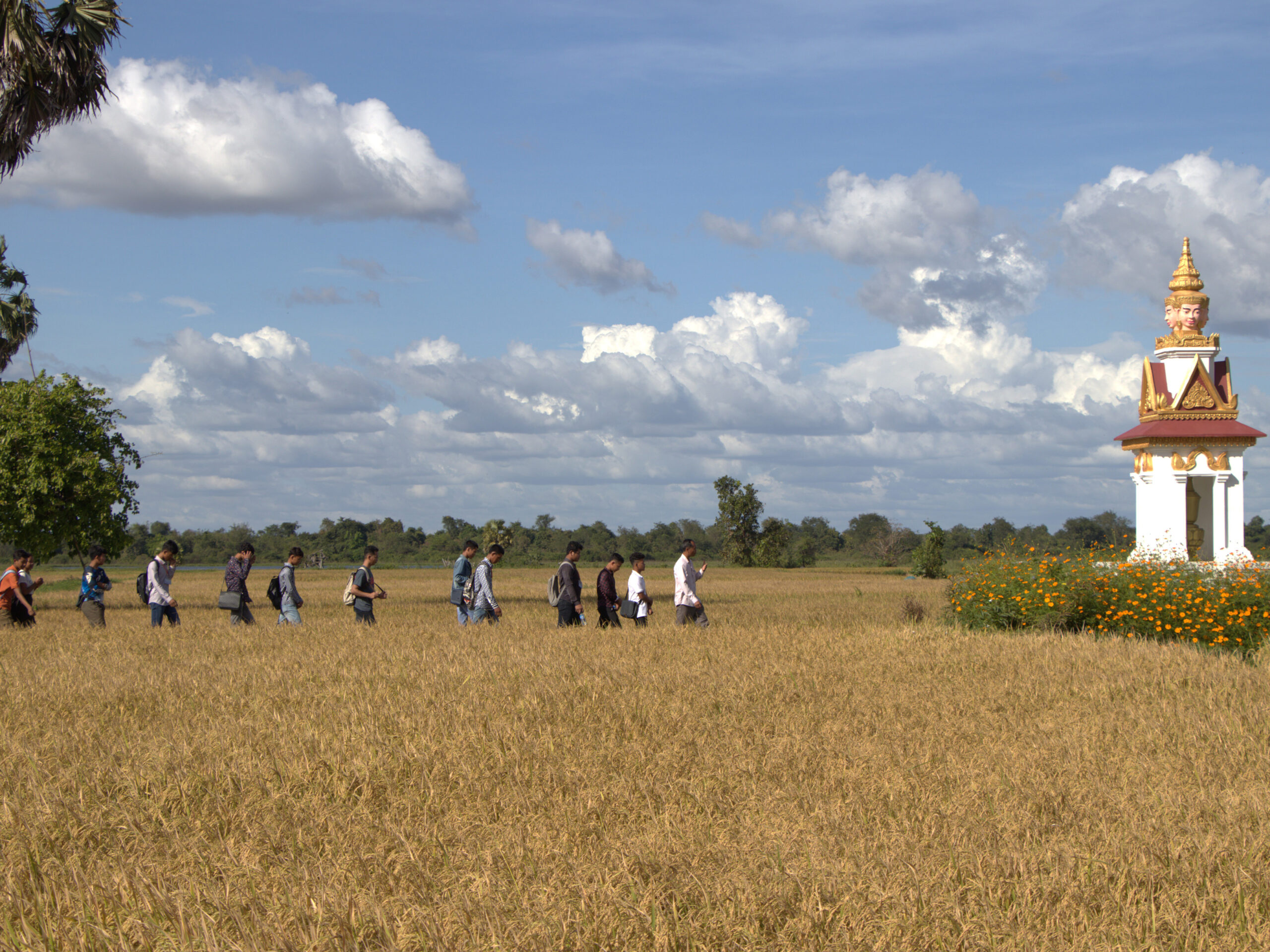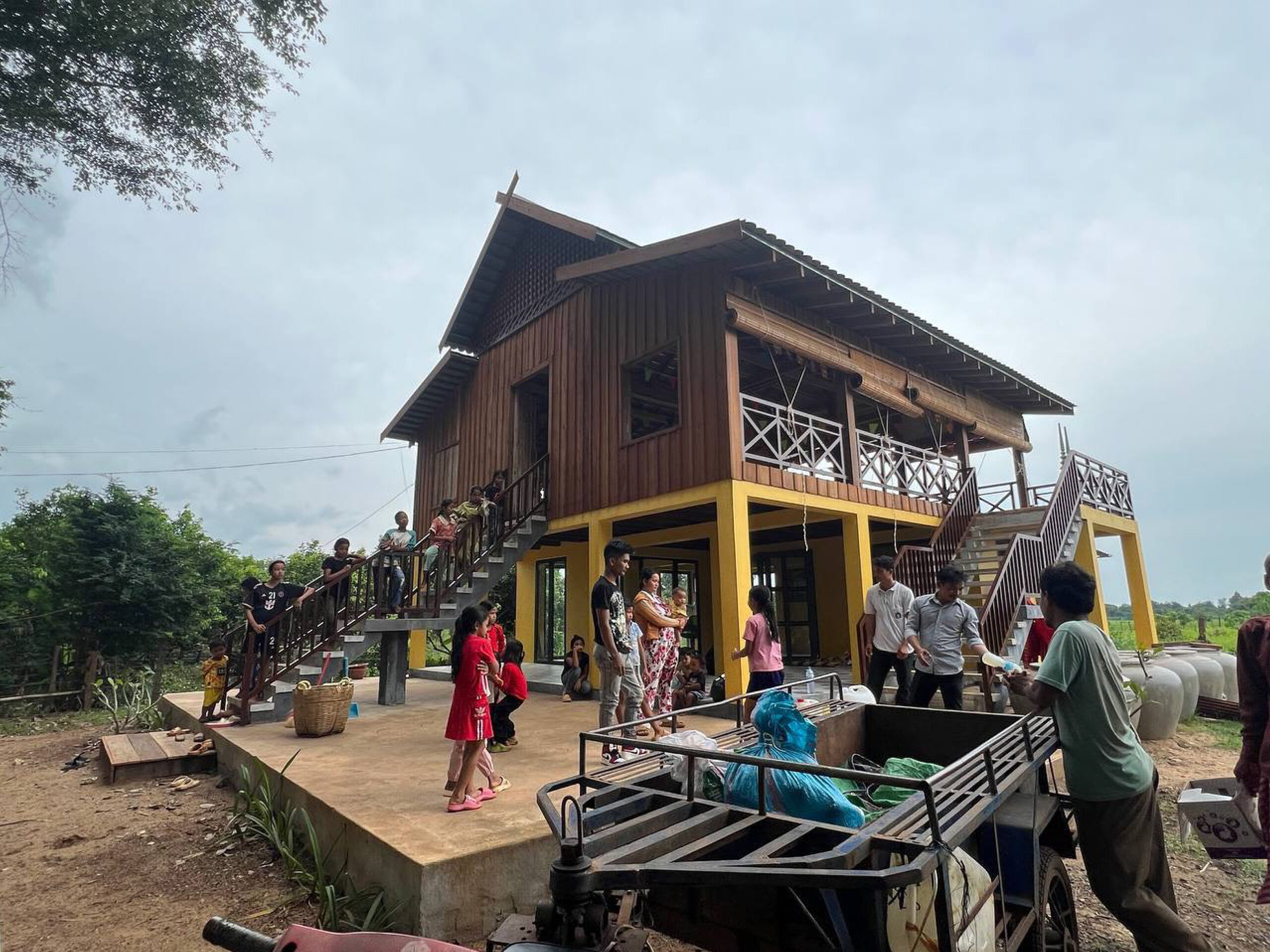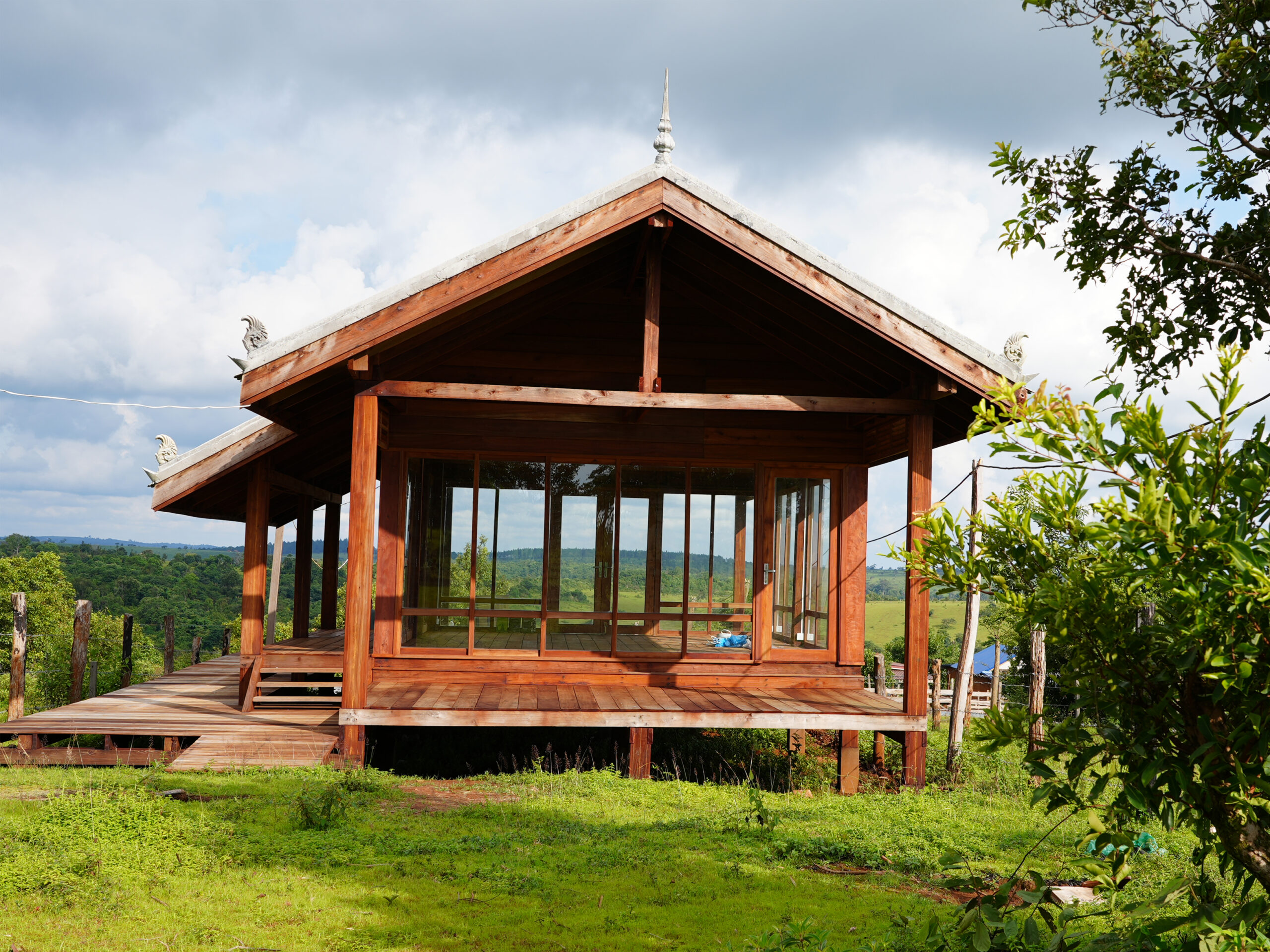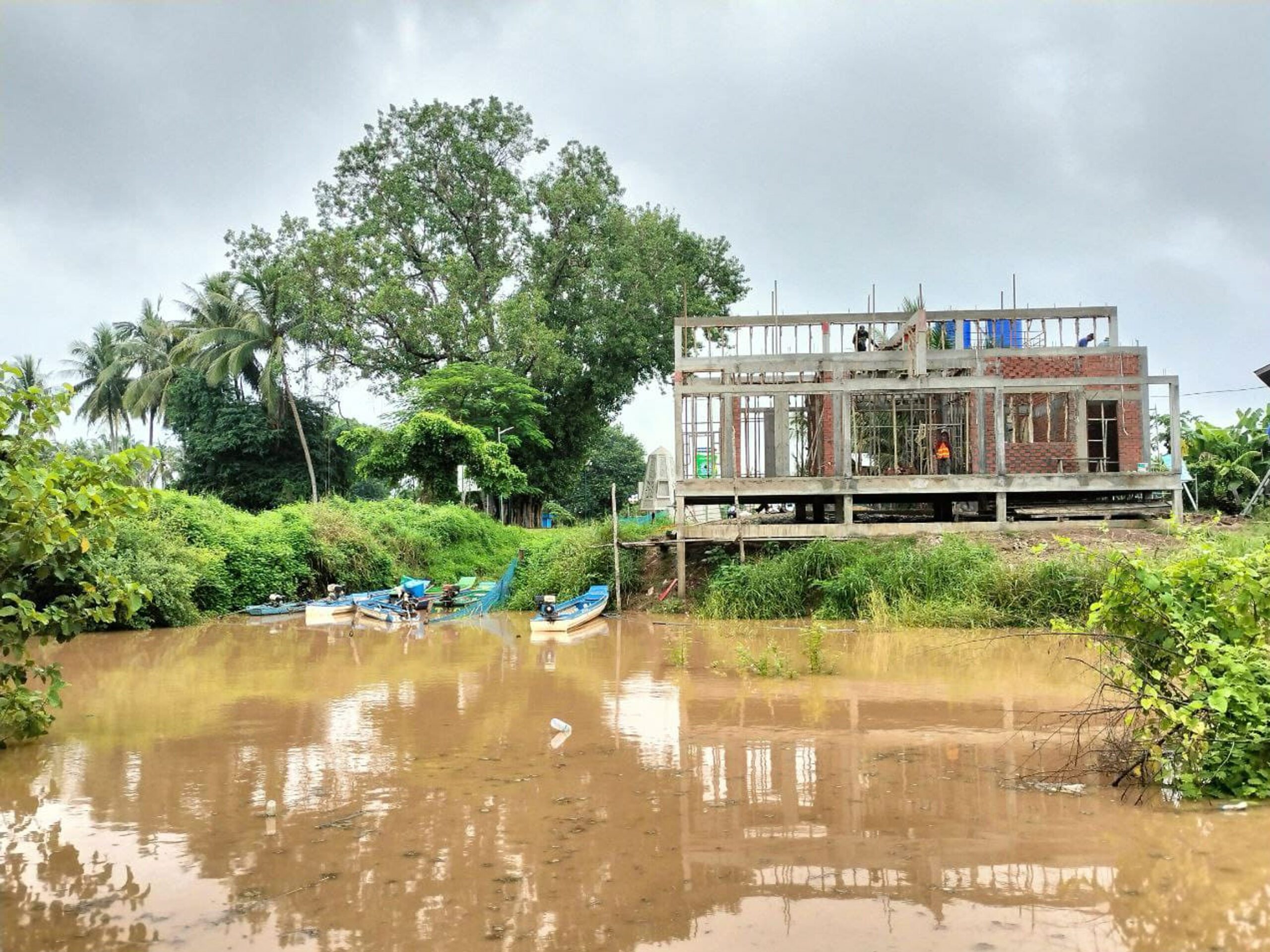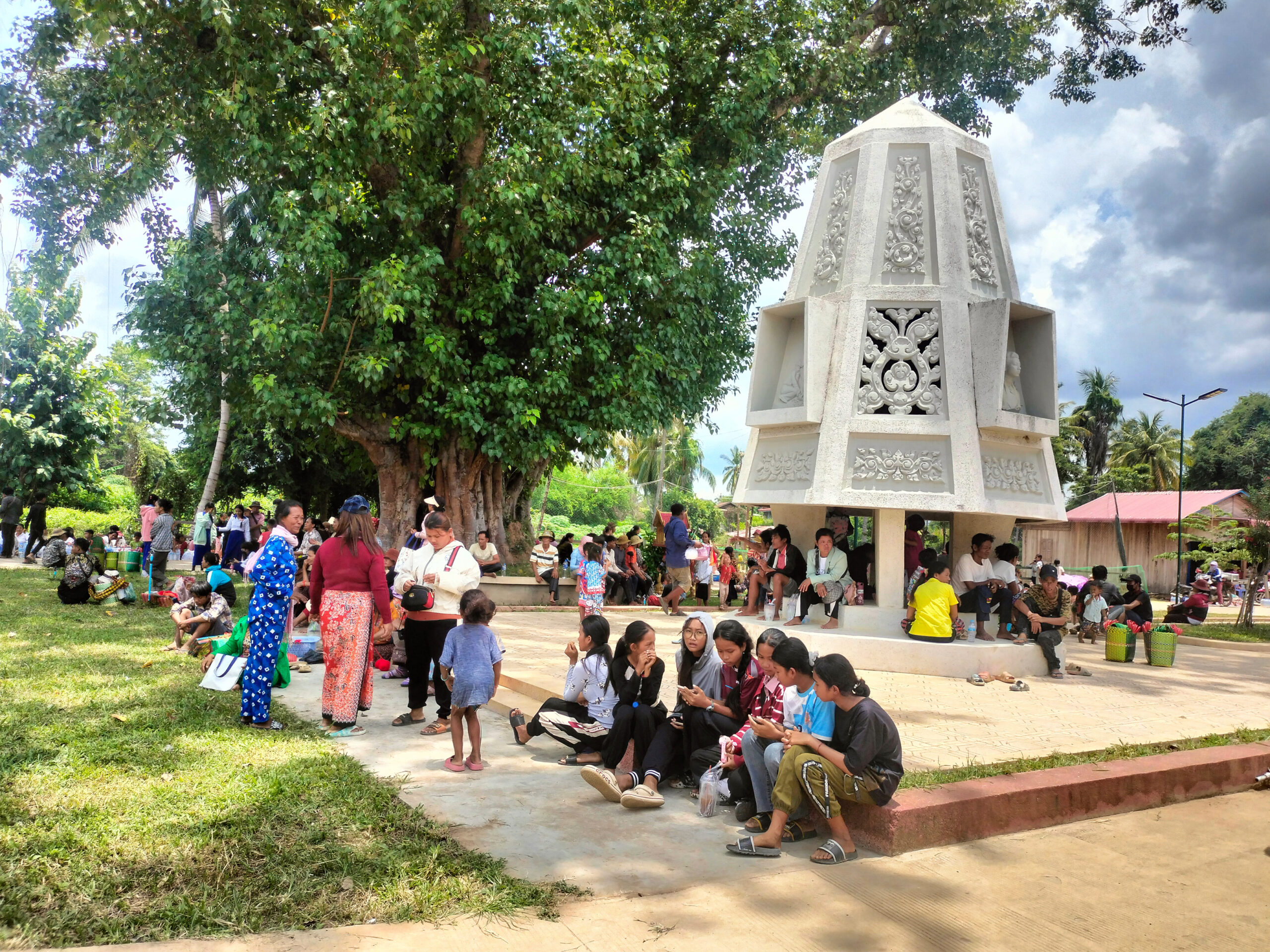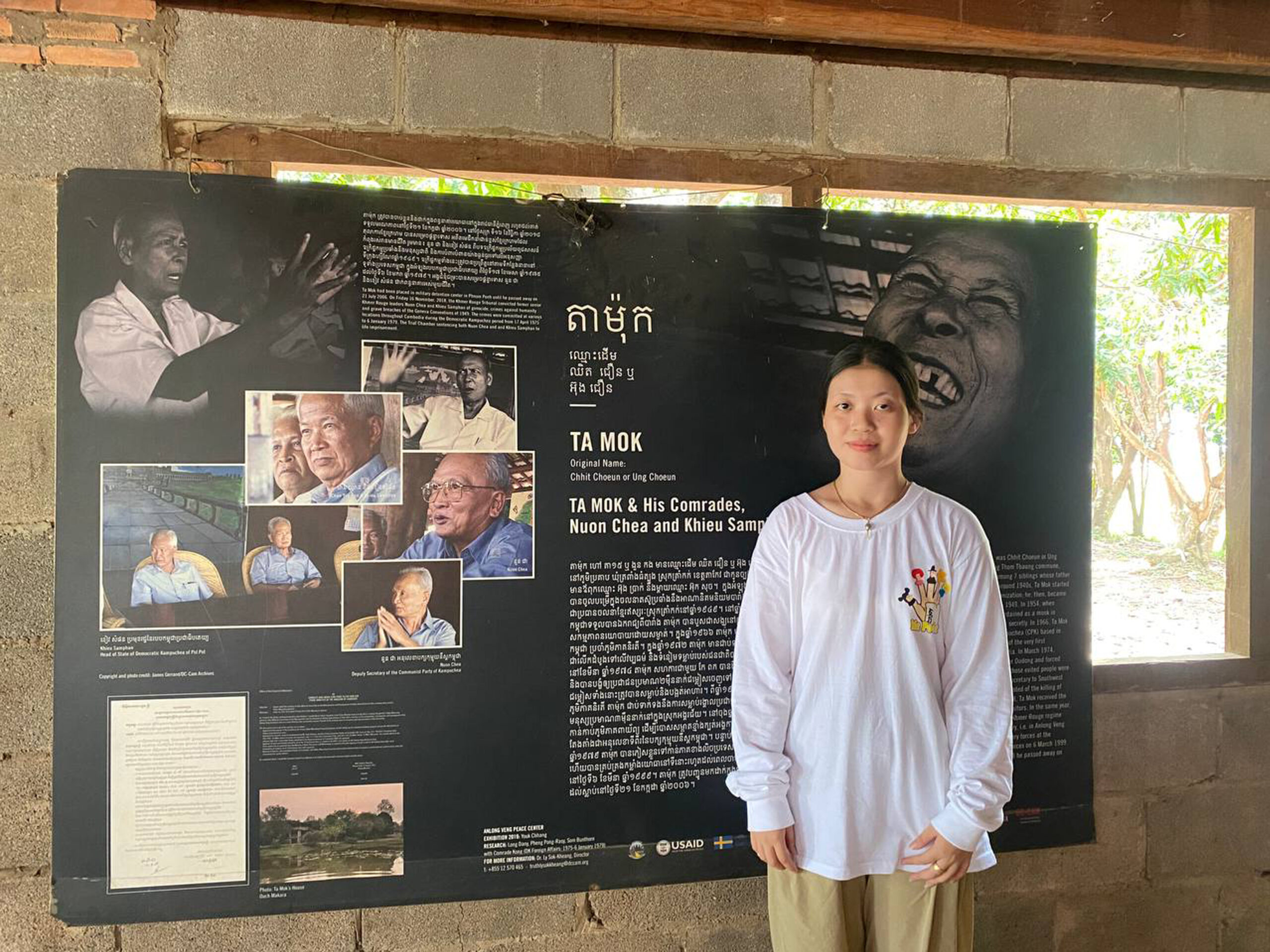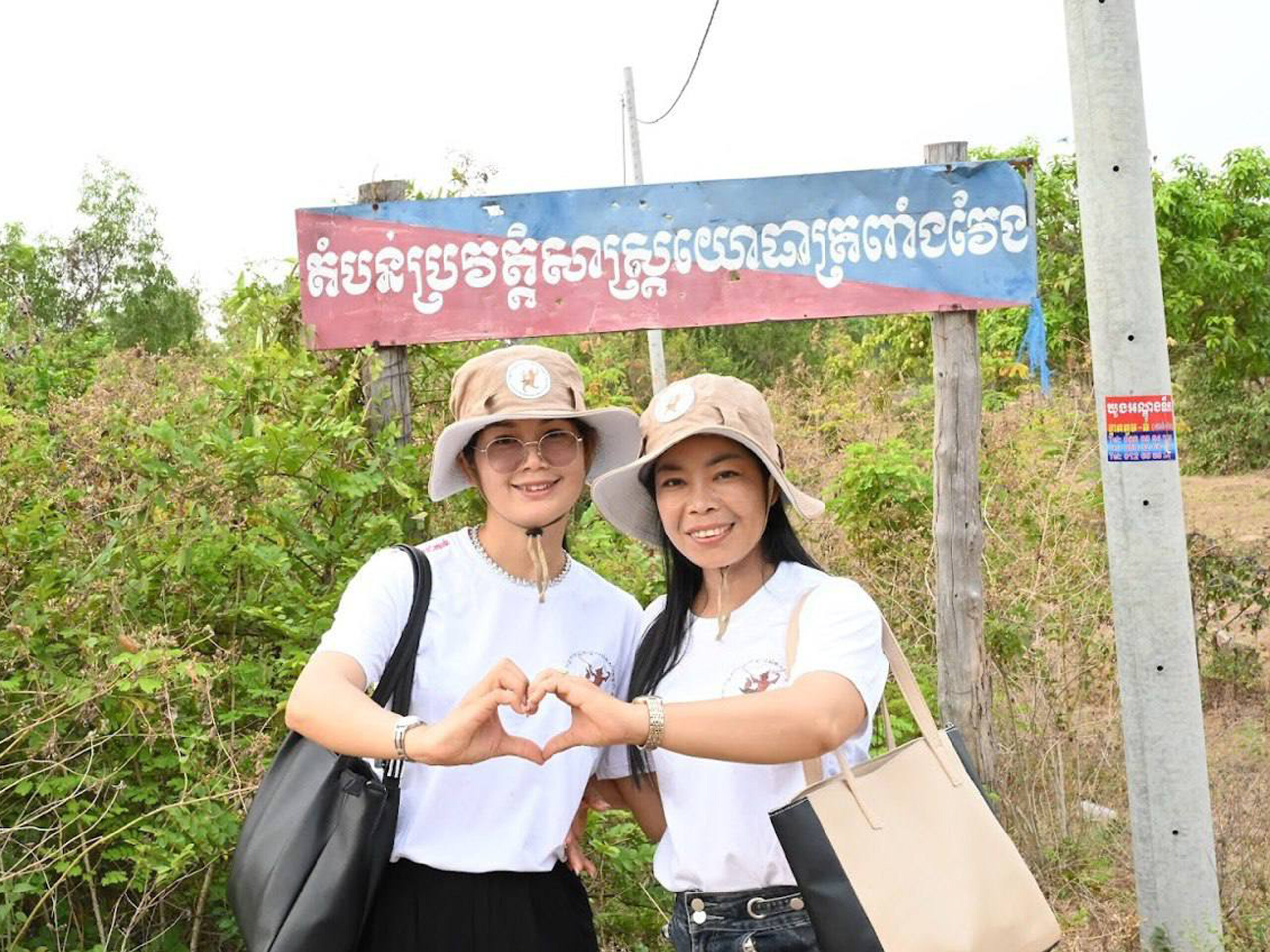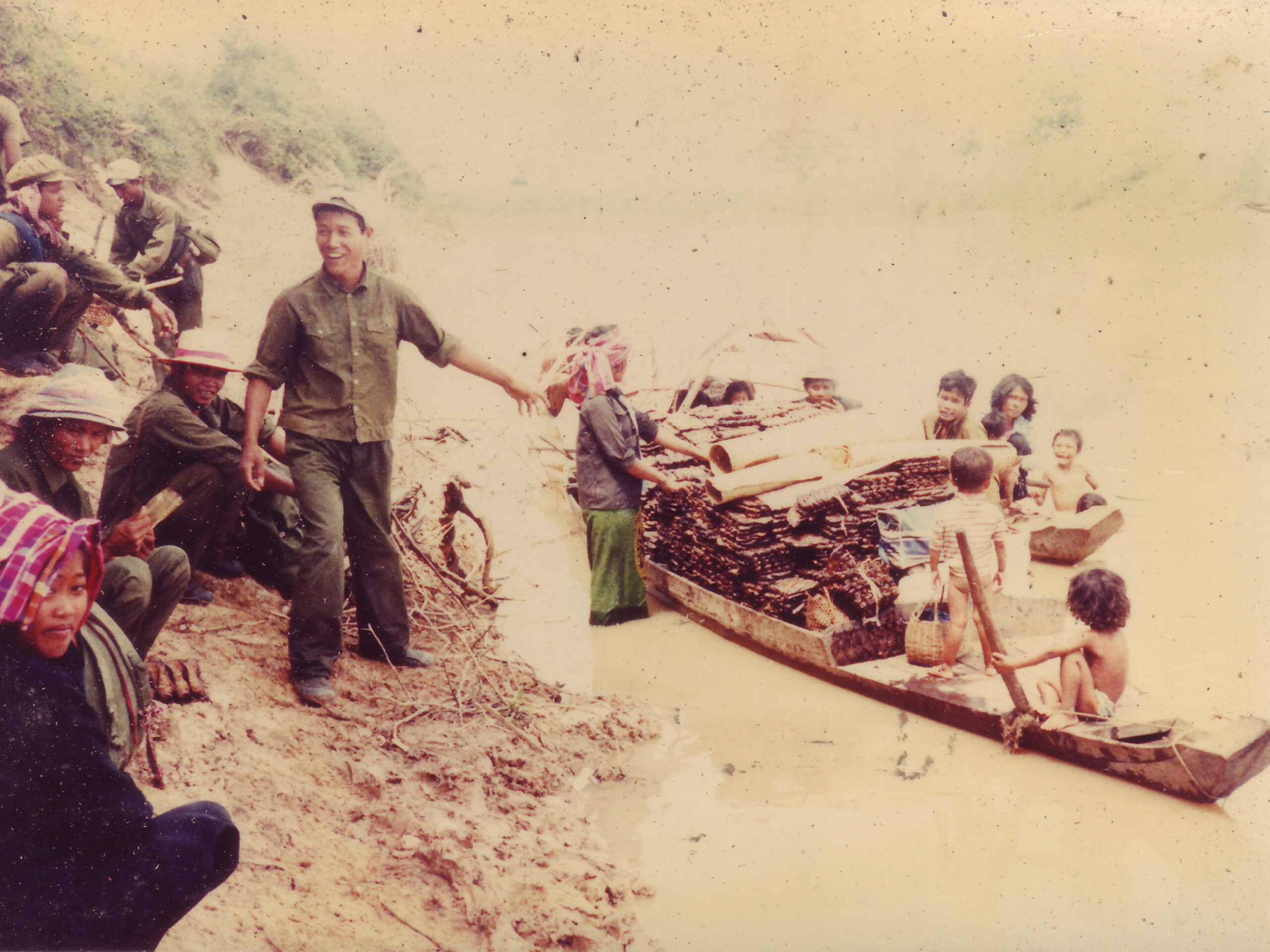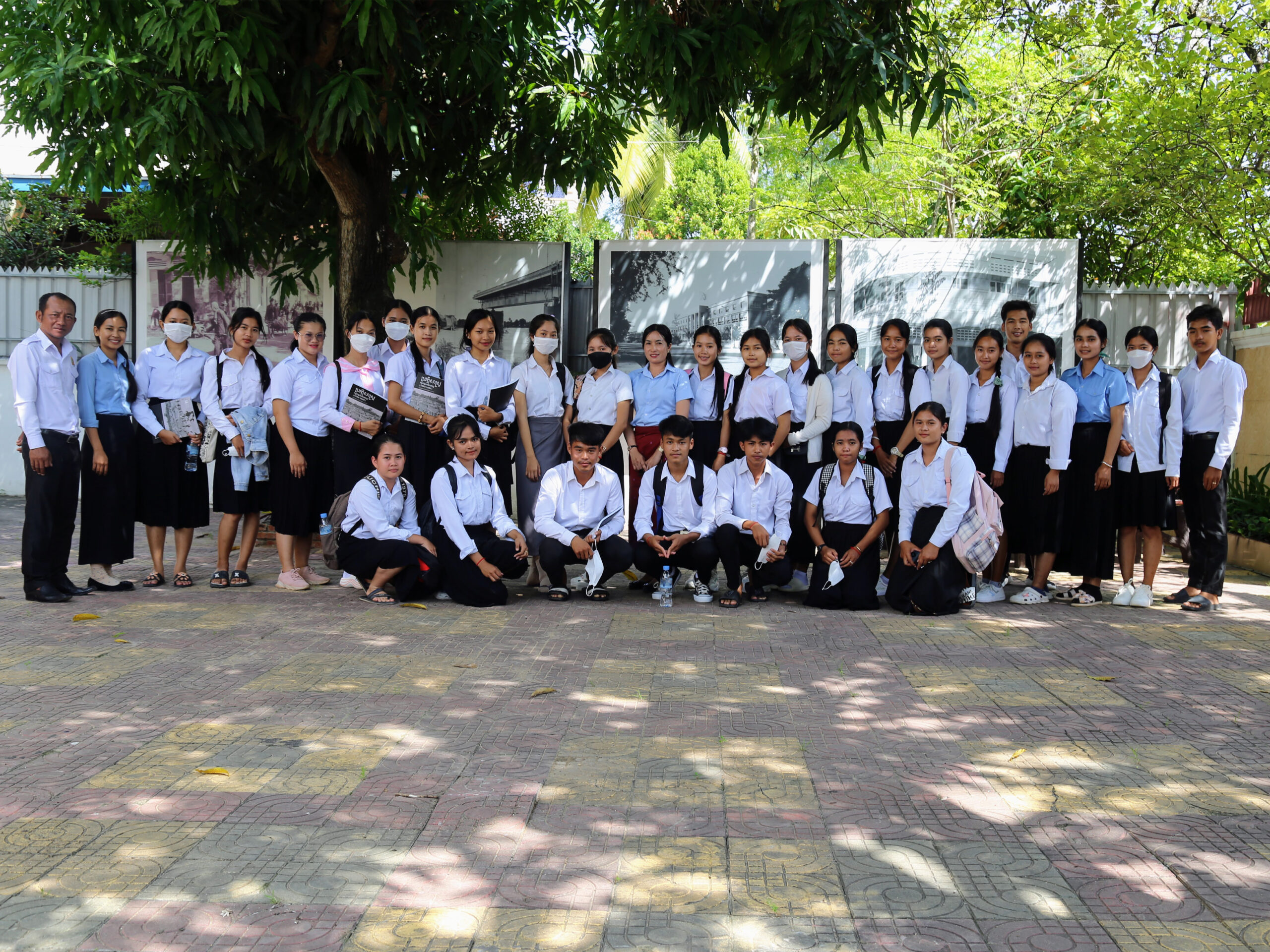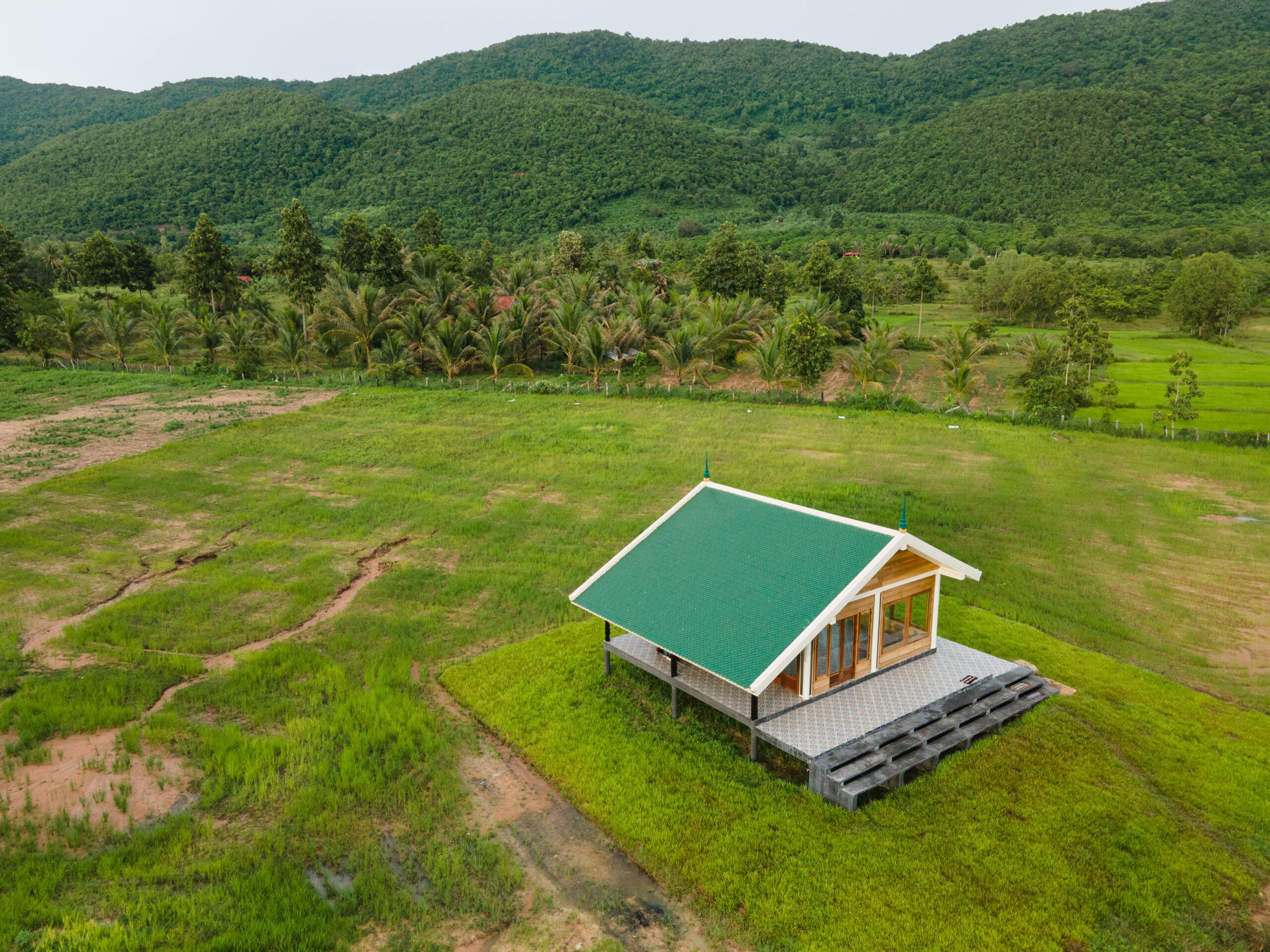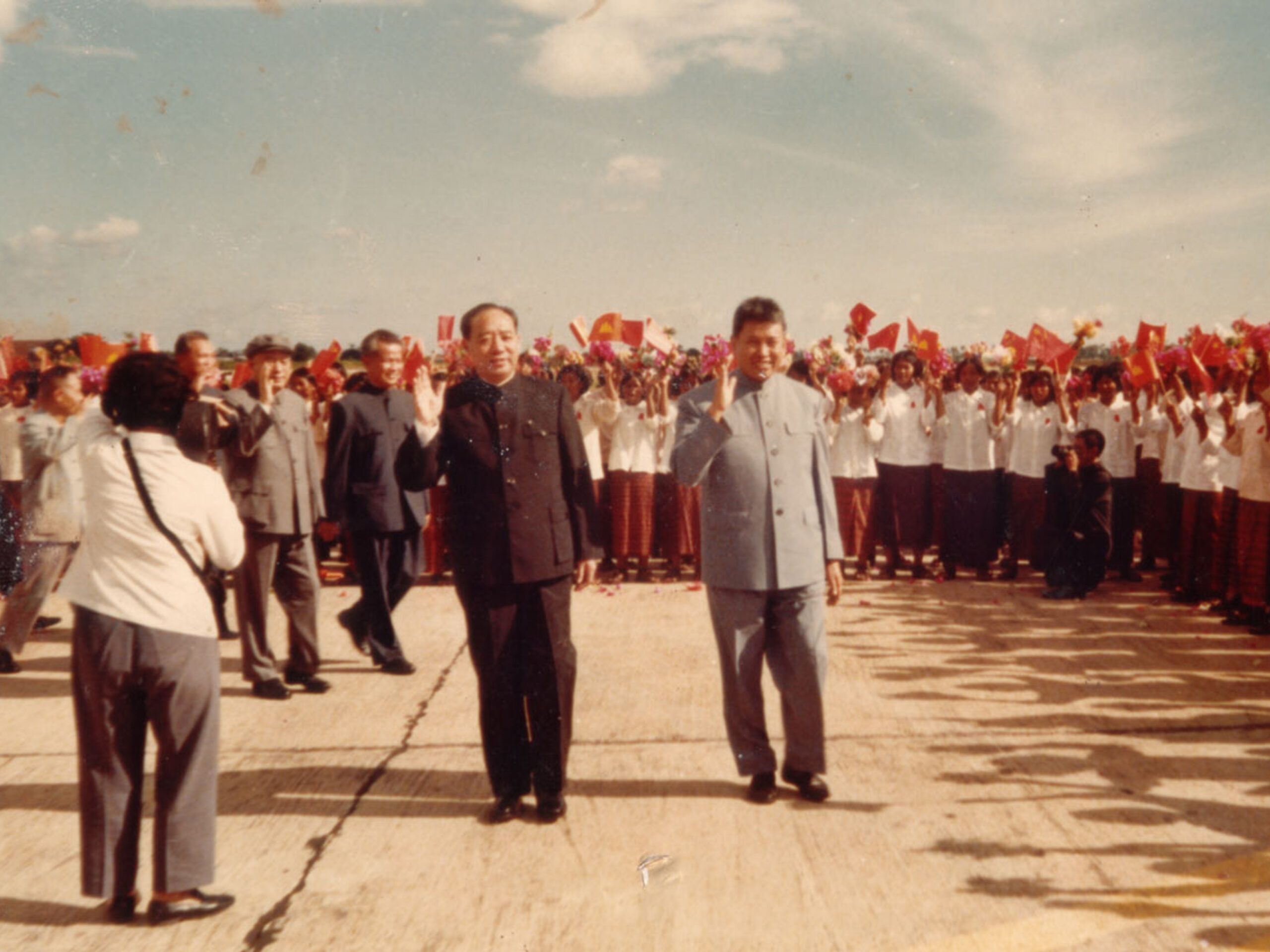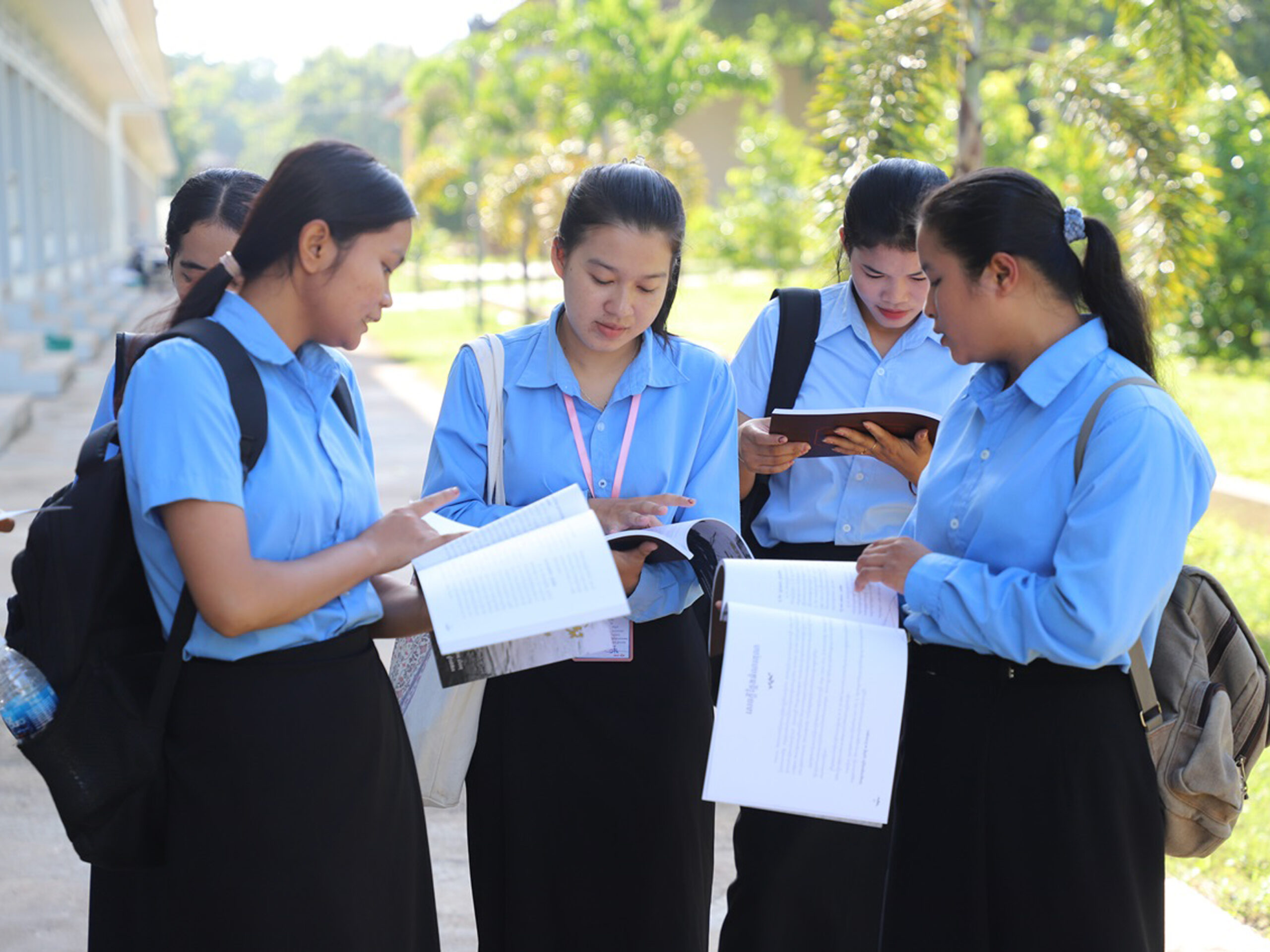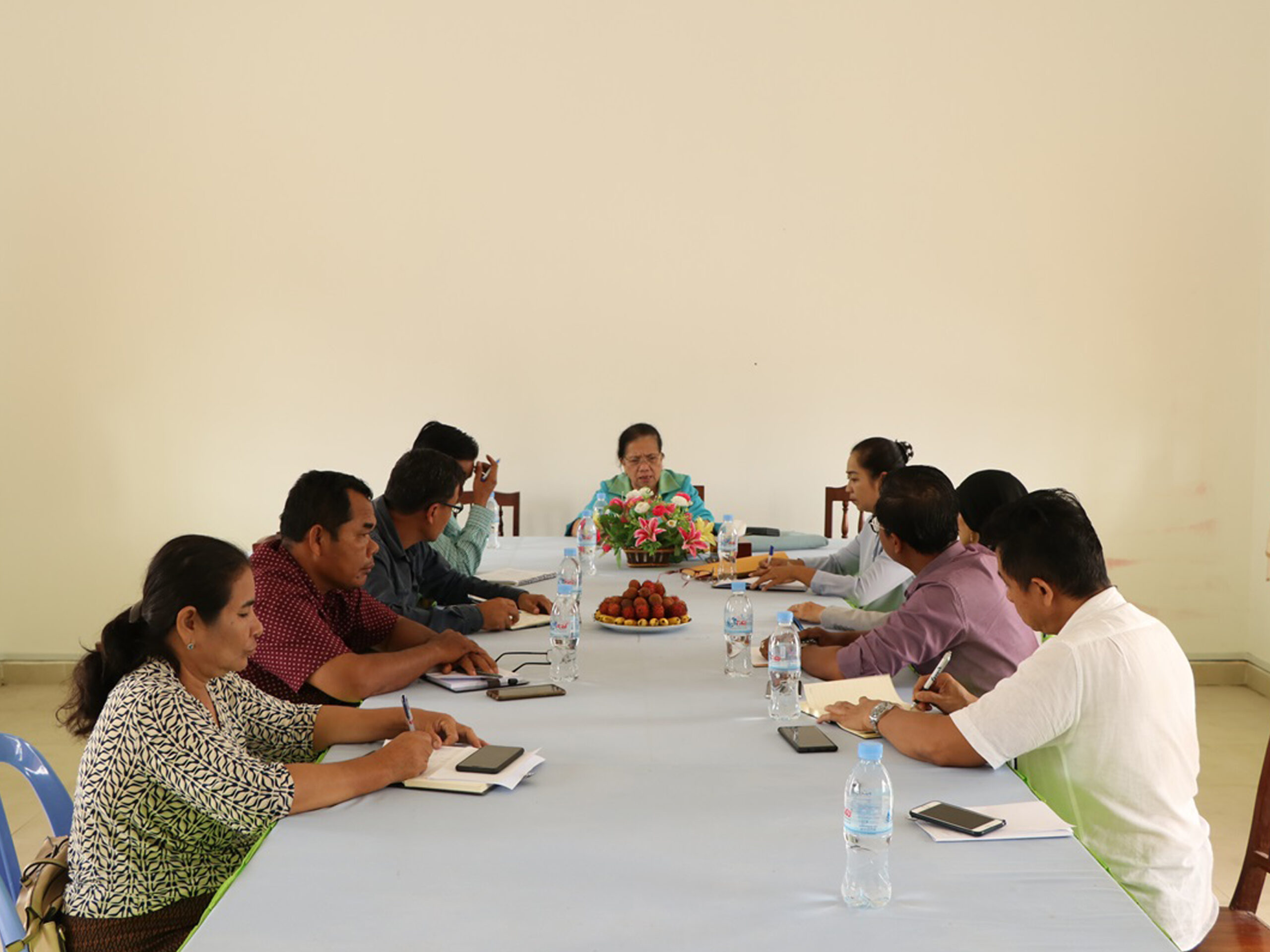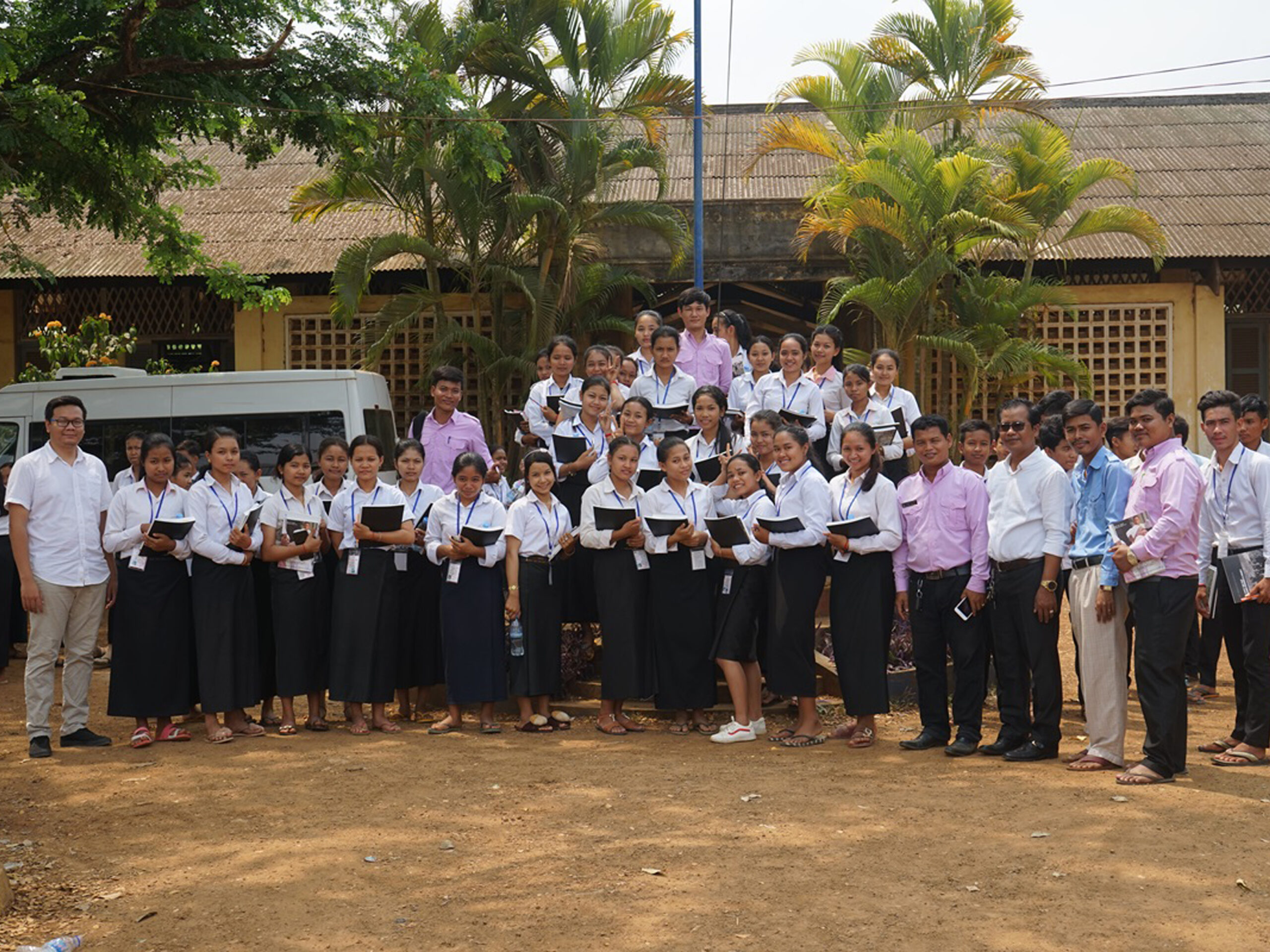Home / Development / DCCAM PROVINCIAL CENTER: Cham Silk: Colors of Memory
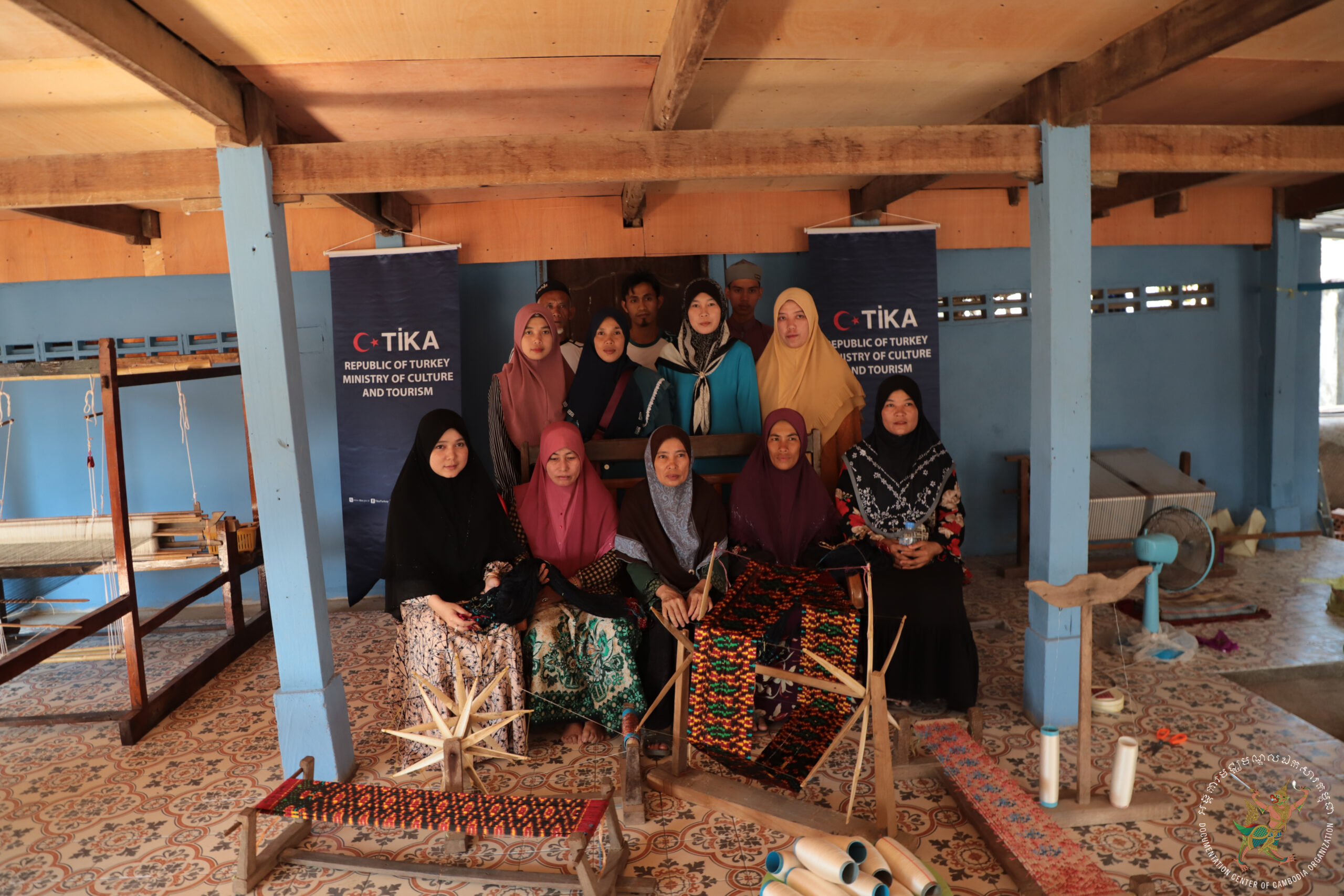
CHAM SILK: COLORS OF MEMORY: The Silk project involves a community whose history dates back to an ancient empire of Southeast Asia whose present day descendants can be found in mainly in Cambodia, Vietnam, Malaysia, and Thailand. The Champa Empire not only gave rise to important cultural norms in the region but the role played by the Cham in the rise and fall of subsequent kingdoms as far away as Aceh traces an important civilisational link through the region. This knowledge is important in enabling the growth of a regional shared identity of the peoples of ASEAN. The project will also highlight the importance of preserving the region’s rich cultural heritage.
From a socio-economic viewpoint, the Cham are in need of assistance as their livelihood is increasingly threatened by non-inclusive modernisation and environmental degradation. As the majority of the Cham live in villages along the Mekong River, the gradual silting and drying of this lifeline has severely affected the community’s ability to maintain their agrarian lifestyles and remain self-sufficient. Consequently, many young Cham persons have had to leave their villages for menial jobs in larger cities. By introducing small local enterprises, villagers are able to introduce new development to their villages while managing the impact on their traditional lifestyles and beliefs.
The objectives of the project are to preserve Cham culture and history, promote education and create an alternative development model to ensure the sustainability of the Cham way of life. A plan was outlined by the DC-Cam with unanimous support from villagers who requested assistance in preserving their cultural landmarks and using the latter for educational and awareness creation purposes.
Other than education, the project also aims at providing villagers with an alternative source of income to supplement their earnings from agricultural activities. This aspect of the project will include setting up small-scale enterprises such as a craft collective. Income earned from this enterprise will also be used partly to support education for Cham students. The project will run in a span of 24 months (June 2021-June 2023) and consist of three main activities:
1) Research and documentation: The team and one or two members of the community will jointly conduct research related to Cham silk. Cham Silk research is the first ever research to be caried out in order to trace Cham silk before the war time up until today. This will result in publication of booklet.
2) Art craft/silk social enterprise: The main aspect of this project is to seek to produce scarves/shawls or other kind of souvenirs made of silk to preserve the Cham tradition and at the same time generate some income to sustain the project. Several talented women of Chan Kiek and Sre Prey villages of Kampong Chhnang province will be chosen to work on this task with several assistants.
3) Training: We will conduct training/workshop on Cham art craft for the participants. The workshop will be beneficial for the participants and the stakeholders.
4) Launching Workshop: This workshop will keep our stakeholder informed and engage them in our activities. It will be conducted in January 2022.
5) Silk Presentation Workshop: This workshop will be organized in June 2022 when we have sample artwork and other products to showcase at the workshop.
The proposed budget for this project is $100,755 which covers research, training/workshop, equipment and supplies, publication, and consultant for the 24-month period.
The Cham people are a minority ethnic group concentrated mainly in the Kampong Cham, Kampong Chhnang, Pursat, and Kampot Provinces of Cambodia. The Cambodian Cham are generally considered an underprivileged minority, largely living in poverty in villages scattered alongside the Mekong River and Tonle Sap. According to the DC-Cam, between 100,000 to half a million Cham perished under the Khmer Rouge rule. They were subjected to worse forms of persecution during the Khmer Rouge period because of their religious and cultural beliefs. The approximately 600,000 members of the community now struggle to preserve their cultural identity.
This project will benefit the Cham elders, the community and their young generation in many ways. First, it helps to preserve their cultural identity and their struggle to preserve it; second, it builds capacity of local young generation in research and documentation; and third, it introduces an alternative way to generate income to the community members.
Contact
YI SOKHY
Accountant
Documentation Center of Cambodia
e: truthsokhy.y@dccam.org
t: +855 (0) 78 510 193
w: www.dccam.org
Location
Street Lum, Ti Dabbei village, Kaoh Sotin commune,
Kaoh Sotin district, Kampong Cham, Cambodia![]()
Activities Photos and Reports
- DC-Cam’s Cham Silk Initiative: The Colors of Memory. August 21, 2024
- THE FUTURE OF CAMBODIA WITHOUT GENOCIDE. Youths from Srey Santhor district Visit the Cham Silk Community in Koh Sotin. August 15, 2024
- The Color of Memory: DCCam’s Cham Silk Research at Kampong Cham Documentation Center funded by TIKA, February 25, 2024
- The Color of Memory: DCCam’s Cham Silk Research at Kampong Cham Documentation Center, February 25, 2024
- THE COLOR OF MEMORY: DC-Cam Cham Silk Initiative funded by TIKA through the Turkish Embassy in Phnom Penh. The Team Visits The Queen Mother Library, DC-Cam H.Q., Hospital for Public Health Education, and Small Business & Workshop at The Royal Palace, February 14, 2024
- THE COLOR OF MEMORY: Cham Silk. Funded by TIKA (The Turkish Cooperation and Coordination Agency), December 26 – 27, 2023
- DC-Cam’s Silk Project: The Color of Memory, The Cham Silk, funded by the Turkish Embassy in Phnom Penh, March 22, 2023
- Letter from The Queen Mother Norodom Monineath Sihanouk
- Hope for Cham Silk Weavers
- THE COLOR OF MEMORY: Video of The Cham Silk Project, April 2023
- The Color of Memory: DCCam’s Cham Silk Research at Kampong Cham Documentation Center, Febraury 12 – June 7, 2023
- Another design COLOR OF MEMORY, Febraury 12 – 13, 2023
- THE COLOR OF MEMORY: Video of The Cham Silk Project, January 2023
- TİKA (Turkish Cooperation and Coordination Agency) Representatives Visit the Kampong Cham Documentation Center and Community Memorial, December 17, 2022
- Cham Silk Forum at Kampong Cham Documentation Center, December 17, 2022
- The Cham Silk Project, September 20-23, 2022
- THE COLOR OF MEMORY: The Chma Solk Project Funded By TIKA, August 2022
- The Cham Silk Project, July 15-18, 2022
- The Cham Silk Project Funded by the Embassy of the Republic of Türkiye in Phnom Penh with Core Support from the United States Agency for International Development, June 13-15, 2022
- The Cham Silk Project, May 16-18, 2022
- The Cham Silk Project, March 18, 2022
- Cham Traditional (Samput Hol) at Koh Sotin District, Kampong Cham province, September 11-13, 2021
- Research and Laboratory of Cham Culture Identity: The Cham Silk, August 12, 2021
